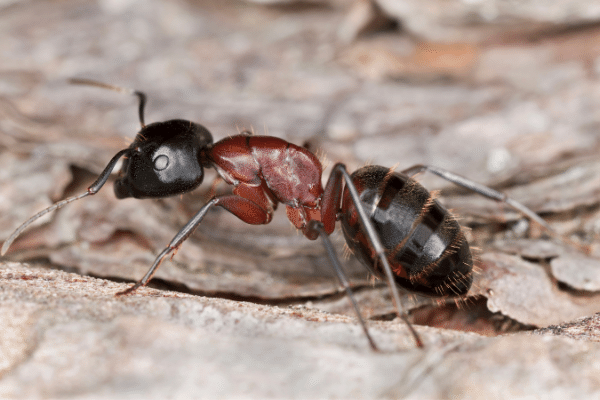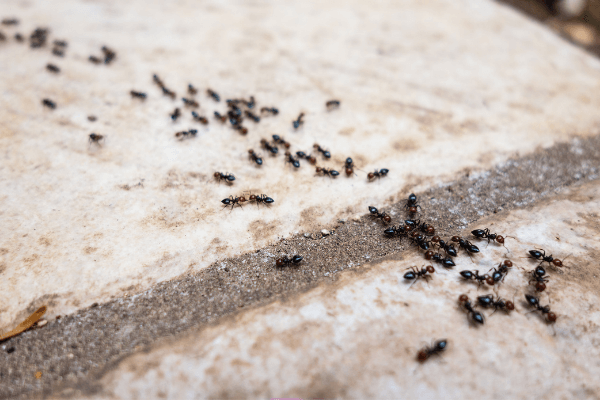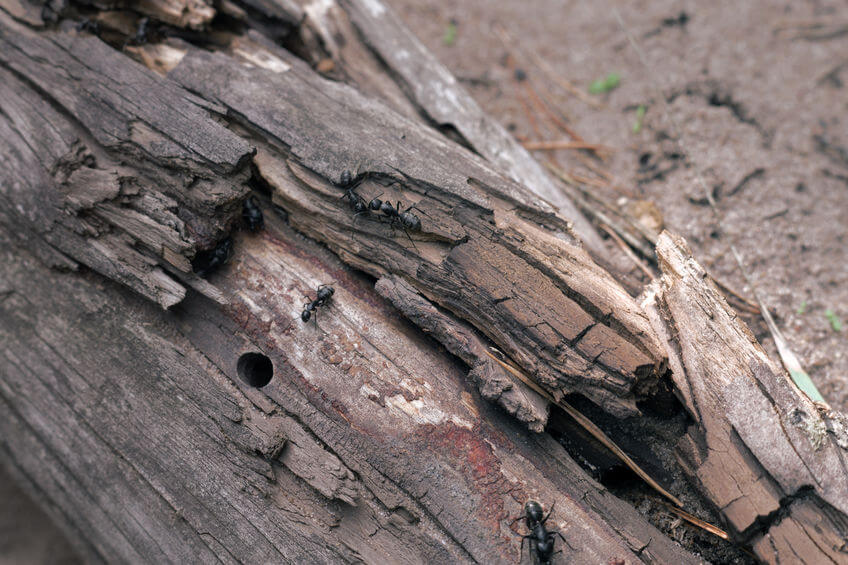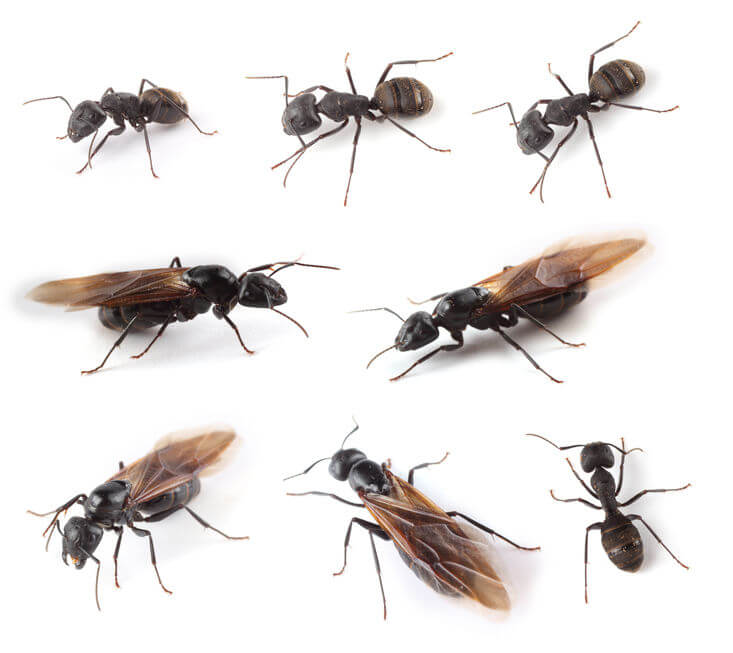- Home
- Get Rid Of Ants
- Carpenter Ants Vs Black Ants
Carpenter Ants vs Black Ants
This post may contain affiliate links so I earn a commission.
Carpenter ants vs black ants - what's the difference and why does it matter?
Let’s start with the basics.
Black ants are the most common type of ant seen in homes.
These types of ants can be found on floors, counters, and other surfaces around your house.
They live in colonies that may contain up to 100 queens with hundreds or even thousands of workers.

Carpenter ants usually create their nest outdoors under logs or other objects close to trees where they are often mistaken for termites because both insects have wood-eating habits.
However, the differences between these two common pests extend far beyond those basic points - here’s what you need to know.
What Are Black Ants?
The word “black ant” is one that is used for a wide variety of ant species.
In fact, some carpenter ants are referred to as black ants, though this is a bit of a misnomer.
More often, the phrase “black ant” is used to discuss the species known as Lasius niger, the common black ant.
This species is found all around Europe, North America, Asia, Australasia, and South America - essentially, all over the world.

Colonies are extremely large and the ant typically resides outdoors, in the garden.
They make their nests in soil and while they often come indoors in search of food, they don’t usually set up shop in homes.
As the name implies, black ants are black in color.
What Are Carpenter Ants?
Carpenter ants, Camponotus spp., are large ants that are found in many forested areas of the world.
Unfortunately, their territory has now expanded to include many peoples’ homes!
These creatures build nests and chew tunnels inside of wood.
They do not actually consume wood, like termites do, but instead leave behind a material that looks like sawdust.
While they’re valuable in the wild, helping to break down dead or dying pieces of trees and to get rid of pests like aphids, indoors, they can pose more of a threat to homeowners.

Like termites or carpenter bees, they can cause significant damage to a home.
Carpenter ants can be black, like black ants, but they can also have a hint of red-brown or maroon to their coloration, too.
Colonies tend to be slightly smaller than those of black ants, generally only reaching around 2,000 to 3,000 individuals.
Carpenter Ants vs Black Ants - Which One Do You Have?
The easiest way to tell the difference between carpenter ants vs black ants is simply by looking at them.
Again, carpenter ants tend to be larger than black ants, generally around half an inch in length with a dual set of wings.
They also have elbows on the antennae, with the front wings often longer than the back wings.
Carpenter ants also have a heart-shaped head along with a smooth, rounded thorax.
Black ants have a thorax that is uneven.
These ants are only a quarter of an inch or so in size, so they’re much smaller than carpenter ants.
If you see what looks like a giant-sized ant in your home, chances are, it’s a carpenter ant, since this is one of the largest species of ants in the entire world.
Black ants typically nest in soil, while carpenter ants nest in structures, furniture, and other things made out of wood.

Although black ants often wind up indoors looking for food, they rarely make nests in homes (while carpenter ants do).
Carpenter ants, on the other hand, nest in or near moist, hollow, or decaying wood.
They create tunnels as they travel - detecting these tunnels is a good indication that you have carpenter ants, not black ants.
You may also notice damage to your deck, porch, roof eaves, windows, framing timbers, and other wooden structures.
You won’t usually find a black ant nest indoors - just see the actual ants as they scurry about in search of food.
Carpenter Ants vs Black Ants - Prevention Tips
You can prevent both black ants and carpenter ants from invading your home in exactly the same way.
That’s great news, especially if you aren’t sure which pest it is that’s causing you trouble.
For starters, do your best to lighten up spaces like basements and attics.
Ants don’t like to hang out where there’s lots of bright light, especially carpenter ants.
Clean up any brush or debris near your home.

This can attract moisture and make it more likely that ants will make the journey from nearby vegetation into your home.
It is especially important to clear up any dead or decaying wood if it’s close to your house.
This attracts ants - carpenter ants won’t infest wood that has a low moisture content, so get rid of wet or rotting wood.
Seal up any cracks in your home, using caulk or another sealant to make sure there aren’t any gaps that make it easy for ants to enter.
Clean up food and spilled water immediately so that it doesn’t attract ants.
This includes pet food, too.
How To Get Rid Of Carpenter Ants And Black Ants
If you do discover that you have ants, your first step in getting rid of them will be to determine which type of ant is causing the infestation.
Carpenter and black ants are similar in their habits and infestations, but treatments are often different.
Black ants can be eliminated with basic treatments such as insecticidal dust, ant baits, and even diatomaceous earth (the latter being a more natural option that’s a good choice for families who would rather avoid chemical products).
Carpenter ants aren’t very responsive to traditional ant baits - they tend to ignore these, for whatever reason.

If you have a serious carpenter ant infestation, it’s a good idea to contact a licensed pest control professional who will be able to evaluate the severity of the problem.
You might not even realize all the areas that have been impacted by the carpenter ants, and these areas, left unaddressed, can result in structural damage to your home.
There are specialized carpenter ant killers you can use, along with home remedies like boiling water and essential oils, but again, getting the advice of a trusted professional is always a wise choice.
At the end of the day, a few ants here and there isn’t anything to worry about - but a major ant infestation can be problematic.
If you aren’t sure whether you're dealing with carpenter ants vs black ants, read through the identification tips above one more time - and contact a professional to help you root out the source of the problem!



